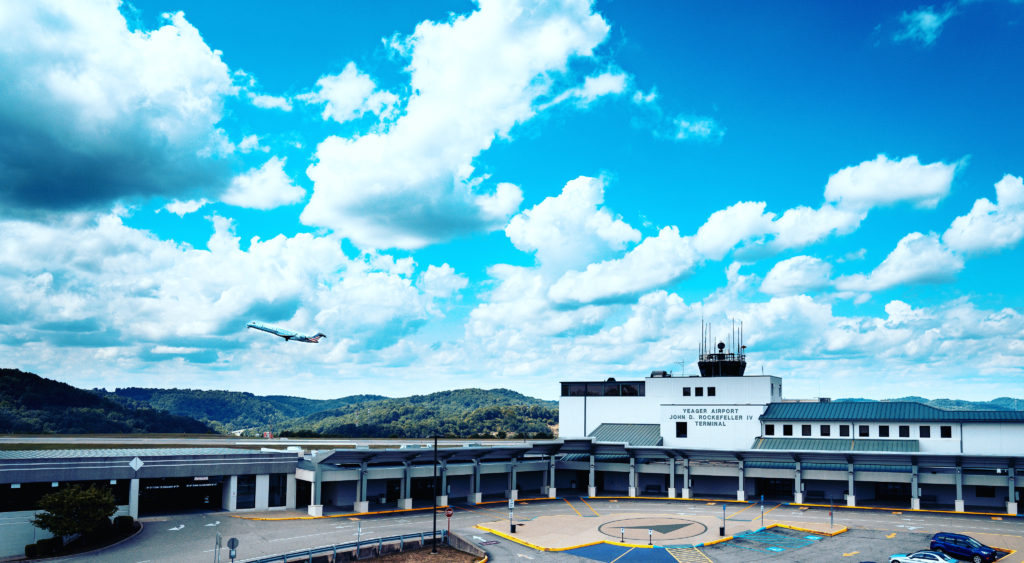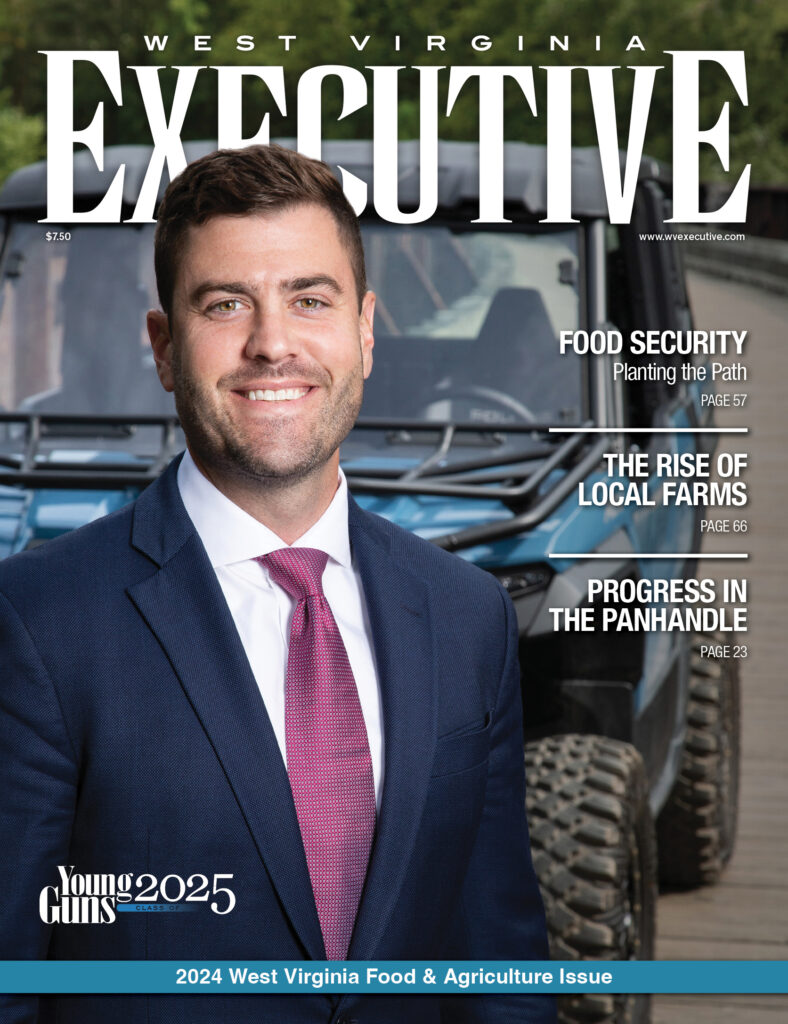By Katlin Swisher, Ph.D.
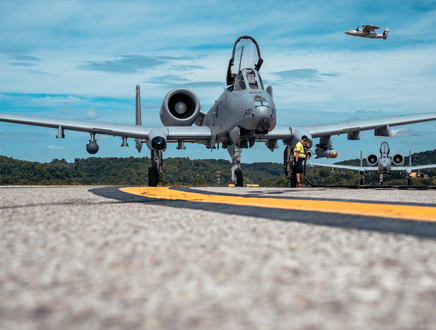
The aerospace industry is one of West Virginia’s fastest-growing economic generators. With nearly $2 billion generated in annual economic impact, airports and related aerospace companies are critical components of the state’s economy.
“West Virginia has a long and proud aviation history. It has never been easier to get to our beautiful state, and that is important to continue to diversify our economy,” says Richard Rock, president of the West Virginia Airport Managers Association and director of the North Central West Virginia Airport (CKB). “Our airports serve as gateways to the world, powerful job creators and necessary economic engines.”
According to the West Virginia University Bureau of Business and Economic Research’s 2020-2024 Economic Outlook Report, aerospace equipment is expected to be the fastest-growing manufacturing subsector in terms of job creation. This assessment reflects Northrop Grumman Corporation’s ongoing expansion of the Allegheny Ballistic Laboratory in Mineral County as well as the continued growth of the aircraft parts and broader aviation industry in North Central West Virginia.
One of the reasons this industry has seen so much recent success is the proximity of many aerospace companies to nearby airports.
“When it comes to economic development in the aerospace sector, an industry that West Virginia has quietly achieved a great deal of success in, being in close proximity to an airport is paramount,” says Sean Hill, director of the West Virginia Aeronautics Commission (WVAC). “The majority of West Virginia’s aerospace companies are located extremely close to our airports.”
Airports are West Virginia’s key to accessing the rest of the world, making them a factor in the growth of other economic sectors and the recruitment of new talent to the state.
“Airports transport people from West Virginia to anywhere in the world, and just as important, our airports are many times the first impression visitors from other states have of West Virginia,” says Hill. “It is imperative in today’s global economy that you can present easily accessible and convenient locations for individuals to fly into when it comes to attracting new business. You would be hard pressed to find a business that is located in the state that does not rely on some form of aviation for the transportation of people and/or goods.”
There are 24 Mountain State airports in the Federal Aviation Administration’s (FAA) National Plan of Integrated Airport Systems. These airports receive funding from federal and state sources for projects to maintain and improve their infrastructure. The state has seven commercial airports where the public can purchase tickets to fly to a destination: CKB, Greenbrier Valley Airport, Huntington Tri-State Airport, Mid-Ohio Valley Regional Airport, Morgantown Municipal Airport, Raleigh County Memorial Airport and Yeager Airport.
It is also home to 17 general aviation airports, where private pilots can fly planes: Appalachian Regional Airport; Braxton County Airport; Eastern West Virginia Regional Airport, which also serves as a reliever for congestion at Dulles International Airport; Elkins-Randolph County Airport; Fairmont Municipal Airport; Grant County Airport; Greater Cumberland Regional Airport; Jackson County Airport; Logan County Airport; Marshall County Airport; Mason County Airport; Mercer County Airport; Philippi-Barbour County Regional Airport; Summersville Airport; Upshur County Airport; Wheeling-Ohio County Airport; and Wyoming County Airport.
“When you think of airports making an economic impact in West Virginia, you traditionally think of the larger airports that bring people, goods and business in and out of the community. However, it is important that we do not forget the small general aviation airports that are home to many successful small businesses and act as the home for essential services such as medical evacuations,” says Hill. “There is a great deal of qualitative value in the businesses located at these small airports.”
Many new economic development initiatives at airports across the state are tied to expansions.
Yeager Airport is in the early stages of looking into a runway extension that would open more than 50 acres of land for potential aerospace-related economic development. Raleigh County Memorial Airport is developing more than 100 acres of site-ready pads for businesses to locate at the airport. CKB is planning to build a new terminal building and create an additional 50 acres of airport space for economic development.
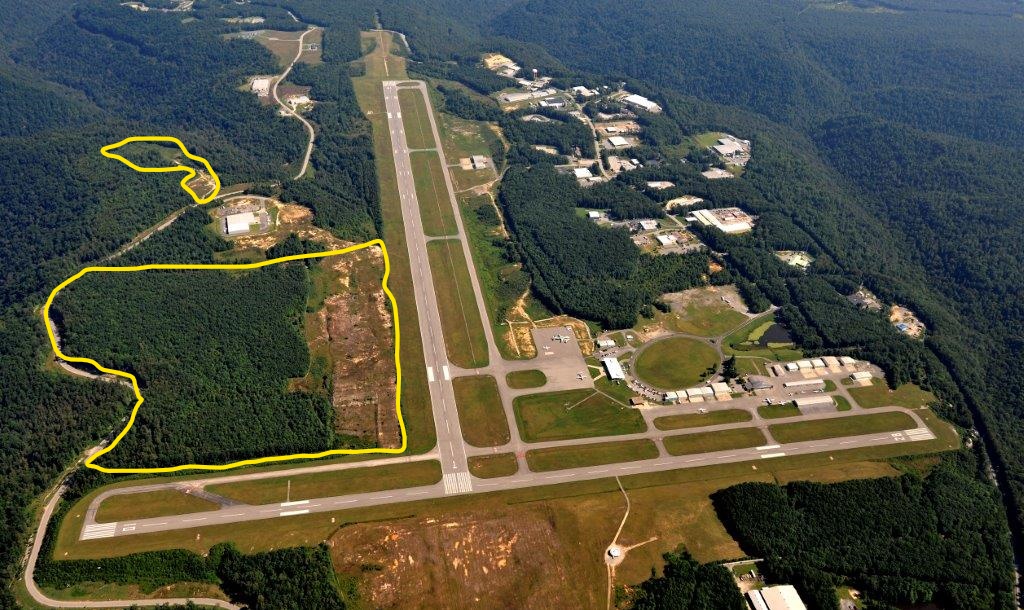
The North Central West Virginia AeroTech Park—home to heavy hitters such as Aurora Flight Sciences, Engine and Airframe Solutions Worldwide, Engine Services Inc., the Fixed Wing Army Aviation Training Site of the West Virginia Air National Guard, HQ Aero Management Inc., KCI Aviation, Lockheed Martin, Mitsubishi Heavy Industries Regional Aircraft Services, NorthStar Technologies LLC and Pratt & Whitney—has grown significantly over the past several years.
“There has been a diverse aerospace and aviation sector in North Central West Virginia for decades, and measuring our economic impact has made all the difference,” says Tracy Miller, president of the Mid-Atlantic Aerospace Complex. “In 2009, CKB conducted a study that revealed its impact on the West Virginia economy was $395 million. This benchmark
allowed us to measure where we were at that point in time and gave us a place to determine what we needed to do to continue to create a positive impact.”
The most recent 2019 data showed CKB’s economic impact at $1.1 billion. The airport’s five-year growth plan includes a terminal relocation and aerospace park development that will create 100 acres of park adjacent to a 7,800-foot runway, with a goal of reaching $2 billion in annual economic impact.
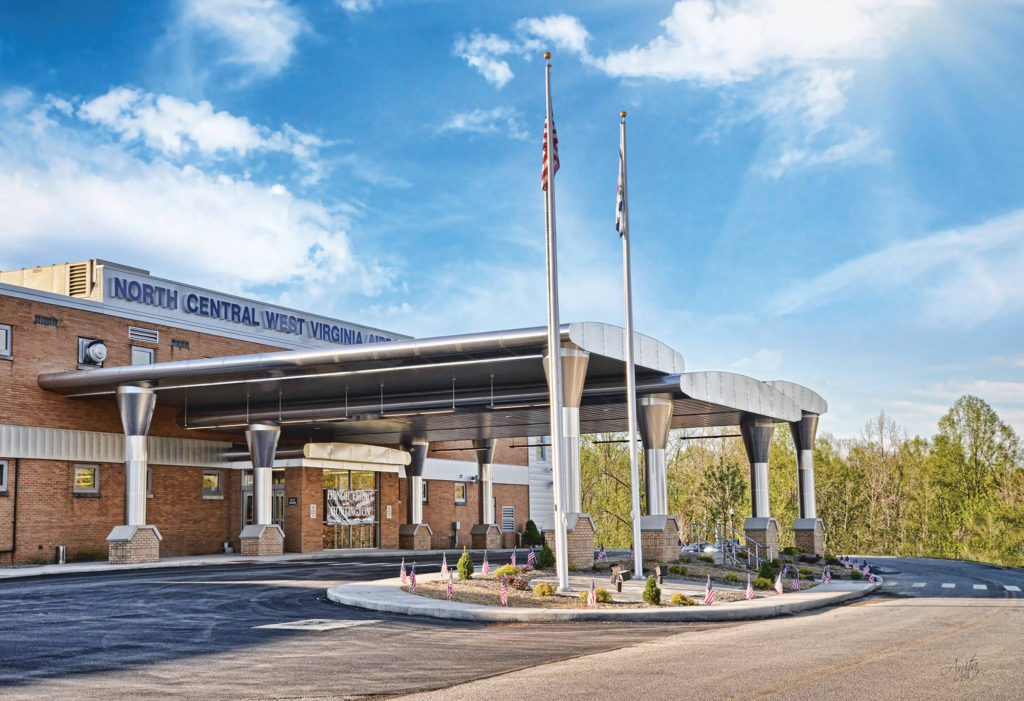
“When the WVAC finalizes its statewide economic impact study, it will be another powerful benchmark,” says Miller. “This will enable every airport and aviation and aerospace job creator to have data and analysis to plan for the future and, most importantly, enable us to continue to tell our story—that almost heaven West Virginia is an important and significant contributor of aviation to the world.”
In August 2020, the U.S. Department of Transportation (DOT) announced $3 million to expand the economic impact of the state’s airports. While these funds would traditionally be part of the FAA’s Airport Improvement Program, some of the funds were allocated as part of the pandemic-related CARES Act instead.
“The U.S. DOT and the FAA are great federal partners in providing funding to maintain and improve the infrastructure of airports across West Virginia,” says Hill. “These funds have been extremely important to our airports because they, in most instances, do not require the traditional 10% local match. This means airports will still be able to complete programs to improve their infrastructure while adjusting for the realities associated with the impact COVID-19 has had on air transportation.”
The most recent economic impact study of the state’s airports was conducted more than 30 years ago, according to Hill. That is about to change with a new study expected to be published by the WVAC in 2021. It is supported by a grant from the FAA and will collectively analyze the annual impact of all 24 airports in the state’s aviation system.
“Each airport’s quantitative impacts will be examined. Additionally, qualitative data in the form of real-life stories will lend a human element to the study by showcasing the importance of aviation to residents, businesses and visitors that go beyond the numbers,” says Hill. “The study in its entirety will assist in communicating the benefits of the aviation system to West Virginia and validate the continued public investment in West Virginia’s system of airports.”
Upon the completion of the study, a technical report will be delivered to the WVAC to aid continued efforts in planning for and developing West Virginia’s aviation system.
“Economic impact studies are a powerful tool to educate the public and our state’s leadership about the importance of aviation in West Virginia. This study will determine annual economic impact of our airports and the number of jobs they support,” says Rock. “From there, it should help prioritize aviation as a key industry that our state leaders should support strategically with economic impact as a key determinant in investing limited resources.”
Each airport will also receive its own individualized report that can serve as a marketing tool in its region. Other deliverables, including an executive summary highlighting the key findings of the study and an outreach toolkit, will also be provided to the WVAC to enhance communication of the study’s findings to various audiences.
“By going through this process, there will be a light shone on how airports and aviation impact West Virginia’s economy,” says Hill. “This study will act as a benchmark for the WVAC moving forward in prioritizing the use of state funds and will help gauge success of our aerospace education programs as well. This study is extremely overdue, and our airports and aerospace industry deserve recognition for the hard work they have been doing for decades to improve upon West Virginia’s economy.”
